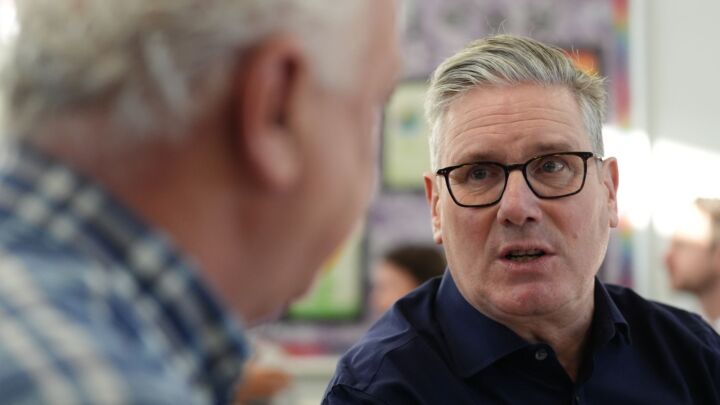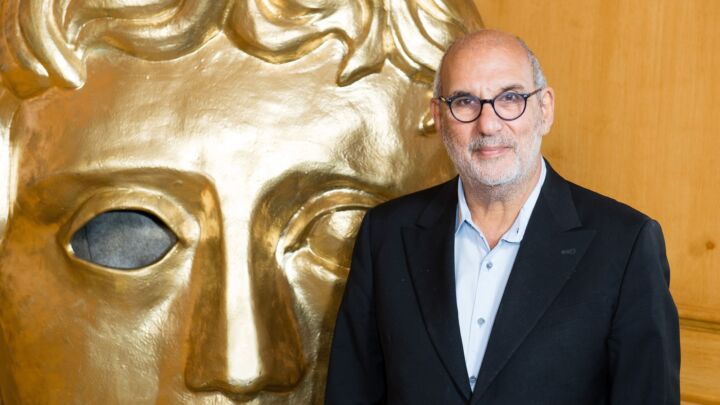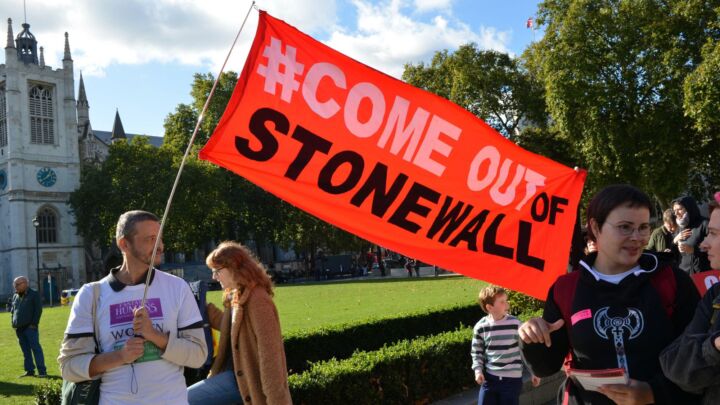The inequality syndrome
The Inner Level is as myopic and poorly researched as its predecessor, The Spirit Level.

Want unlimited, ad-free access? Become a spiked supporter.
Is Kate Pickett and Richard Wilkinson’s The Inner Level the sequel to The Spirit Level or the director’s cut? Because while reading Pickett and Wilkinson’s latest, one wonders how many sections are off-cuts from the 2009 bestseller removed at the publisher’s insistence. Likewise, the structure of The Inner Level will be uncannily familiar to those who read the original: a series of chapters make the case for income inequality causing a remarkably wide range of social ills, followed by some guff about hunter-gatherers (‘remarkably well-off’, apparently), baboons and climate change, before rounding off with a rallying cry for ‘radical egalitarianism’ and ‘economic democracy’.
The Spirit Level relied on a succession of dubious scatterplots for evidence. The Inner Level has no shortage of similar graphs, but is more focused on explaining how inequality causes so many problems. This is a question that needs addressing since the explanation given in the original was thinner than a Rizla.
The answer provided by The Inner Level, such as it is, is that ‘modern, free-market societies’ cause status anxiety. To keep up with Joneses, people work ever longer hours and immerse themselves in consumerism. This, so the argument goes, leads to mental-health disorders and substance abuse which, in turn, lead to worse parenting. And so the cycle continues.
This was the theme of Oliver James’ atrocious pre-recession polemic, Affluenza, and dozens of similar works that appeal to the fears and prejudices of Guardian readers. From the outset, Wilkinson and Pickett assume that the reader is plagued by ‘shyness’, ‘self-doubt’ and ‘party anxiety’, the symptoms of which include tidying your house before visitors arrive. We are told that ‘lack of confidence and a sense of insecurity have reached a level of intensity that makes them perhaps the most important limitation on levels of happiness and the quality of life throughout many rich societies’. If you are disposed to believe this, you are more likely to swallow what follows, but if you have your doubts about shyness and fatigue being bona fide mental disorders and suspect that most people’s happiness is constrained by more material considerations, you will want some evidence.
Or, at least, a coherent argument. The problem is that Wilkinson and Pickett are not very good at laying one out. Unable to see a tangent without going off on it, they fill the book with mini-essays about everything from package holidays to psychopaths, the relevance of which is opaque at best. They devote a whole chapter to a gratuitous assault on genetics in which they misrepresent the literature on IQ, misunderstand the Flynn Effect (the global increase in intelligence-test scores), and attack the absurd strawman position that people’s lives are entirely determined by their genes. Not only is their claim that practice is the ‘overwhelming determinant’ of ability wrong, it has approximately nothing to do with the subject of the book, so what purpose does such blank-slate science denial serve? It seems that the authors cannot tolerate any explanation for anything unless it involves the gap between rich and poor, especially if the explanation implies that we might be living, even to some small degree, in a meritocracy.
Each chapter has a theme of sorts – consumerism, narcissism, class, etc – but within those loose constraints Wilkinson and Pickett hold forth on anything that interests them before closing the chapter with words to the effect of ‘…and do you know why that is? Inequality.’
The incoherence of the narrative serves a function. By disorientating the reader with a combination of science, folk wisdom, bald assertion and anecdote, they make the reader forget which of their claims are substantiated by credible research and which are hunches, guesses and wild extrapolations. A common technique used here, as in The Spirit Level, is for a single piece of speculative evidence to be presented early on which has become gospel truth by the time they refer to it later.
This technique works in reverse, with the authors claiming that they will prove something later in the book and then failing to do so. ‘We shall see in the course of this chapter and the next’, they write, ‘that depression, psychotic symptoms, schizophrenia and narcissistic traits are all significantly more common in more unequal societies’. But we don’t. They admit that there are no internationally comparable figures for narcissism and they barely discuss depression, let alone compare prevalence in different countries, although they are able to find just three studies in the literature that point to a relationship with inequality. They devote a whole chapter to anxiety but there are no internationally comparable figures for this either, so they settle for the observation that anxiety and inequality have both risen in the US, albeit not at the same time.
Schizophrenia didn’t feature in The Spirit Level, presumably because Wilkinson and Pickett could not find a correlation with inequality using their normal methodology (which excludes any country poorer than Portugal), but The Spirit Level’s success has inspired sociologists around the world to seek out new correlations using whatever methods they like. The fruits of their labour appear in The Inner Level whenever Wilkinson and Pickett are let down by their own system, including a strange graph that supposedly shows that inequality causes schizophrenia thanks to Brazil and Costa Rica being thrown into the mix at the ‘less equal’ end and the Soviet Union and China circa 1980 being added at the ‘more equal’ end.
Their best evidence for their hypothesis that inequality makes people mentally unwell remains their graph showing rates of mental disorders in 12 countries. It appeared in The Spirit Level and it is reproduced here, but it is far shakier than the casual reader could imagine. I have written about it at length before, so I will only mention here that it is cobbled together from different studies which produced markedly different results. One study gives a figure for Germany of nine per cent, for example, while another says 24 per cent. If I tell you that Germany is a ‘more equal’ country you can probably guess which of the two figures Wilkinson and Pickett used.
They do not address these methodological flaws, but they do respond to a psychiatrist who noticed that their correlation showed that people in English-speaking countries self-report higher levels of (mostly minor) mental disorders than Europeans and wondered whether this reflected ‘particularities in the Anglo-American world, both in psychiatric culture and in trends towards the psychiatrisation of everyday life’. Given that the lowest rates of mental disorder are recorded in the relatively poor (and highly unequal) countries of Nigeria and China, this is an important point, but Wilkinson and Pickett dismiss it with a characteristic appeal to the authority of expertise. They assure the ‘irate psychiatrist’ that the ‘carefully constructed scientific surveys’ are considered reliable by ‘a consensus of experts’. So that’s all right then. They further assert that the surveys ‘count only severe and disabling conditions’ (highly debatable) and that they all produce similar results (untrue).
Next comes substance abuse. The study Wilkinson and Pickett use to get most of their figures for mental illness prevalence also has figures for substance-use disorders. This seems an obvious place to start and yet they never mention it, perhaps because its figures do not yield an association with inequality when plotted on a graph (I checked). As in The Spirit Level, what is concealed is often more interesting than what is revealed; graphs showing a relationship between inequality and relevant variables such as suicide, happiness, life satisfaction and stress-related diseases are all conspicuous by their absence.
Confronted by a ‘puzzling’ lack of association between inequality and smoking, Wilkinson and Pickett conclude that nicotine is not strong enough to numb the pain of living under capitalism. A similar failure to find a link with alcohol consumption is dismissed on the basis that people can’t remember how much they drink, although Wilkinson and Pickett speculate that young people ‘pre-load’ on alcohol because of inequality-induced status anxiety. They do find an association with problem gambling, but while I generally resisted the urge to go down the rabbit hole of checking their primary sources while reading, I immediately noticed that the problem-gambling figure shown for the UK is more than twice as high as it has ever been.
From such empirical molehills, Wilkinson and Pickett build mountains. Here are just a few of their claims: ‘In more unequal countries people want to present a more positive view of their own health… [P]eople in more equal societies are more modest… [S]tatus anxiety increases with inequality… [S]elf-enhancement also increases in more unequal societies… Rising inequality seems to have resulted in a heightened need for people to defend their self-worth… Inequality replaces co-operation with status competition… Greater inequality not only causes psychopathic tendencies to manifest in more people, it provides the cut-throat environment in which those tendencies come to be seen as admirable… [T]he tendency for better-off people to behave in more antisocial ways is not found in more equal societies… Inequality renders whole societies less empathetic…Income inequality increases the social distance between us… Inequality changes the way people think about others… [P]eople in more unequal countries [are] less willing to help others…’
These quotes all come from a single chapter of The Inner Level. Extended over 300 pages, you have a picture of ‘less equal’ nations (the English-speaking world, basically) which is unremittingly gloomy. British readers, at whom it is principally aimed, are told that they are either selfish and sociopathic, or depressed and subservient. We are, supposedly, uncaring, unsharing, friendless hyper-consumerists, on the brink of mental illness if not clinically insane, who have retreated from society to admire ourselves in the mirror.
You have to wonder how a young Swede who has never travelled abroad would react to reading this book. How surprised would she be to arrive in Britain and find it much the same as her homeland, except we don’t have to pay for a GP appointment and the government doesn’t run the off licences? She would not guess from reading The Inner Level that the British state spends 41 per cent of GDP and provides free education, healthcare, pensions and more to every citizen (benefits in kind are not reflected in income inequality figures, though they represent an overwhelmingly pro-poor redistribution of wealth).
Take a step back and what Wilkinson and Pickett portray as a seismic gap between equal and unequal nations becomes the narcissism of minor differences. Income inequality is measured by the Gini coefficient, with 0.00 representing total equality and 1.00 representing total inequality. Globally, it ranges from 0.26 in Slovenia to 0.63 in South Africa. The United Kingdom currently has a Gini coefficient of 0.32, making it indistinguishable from France and Japan (both 0.32) and within touching distance of Germany (0.30), the Netherlands (0.28) and Sweden (0.27). If we look at wealth inequality – which Wilkinson and Pickett never do because it would obliterate their hypothesis – the UK is below average among rich countries and is well below the supposedly egalitarian nations of Denmark, Norway and Sweden.
In the decade since Wilkinson and Pickett wrote The Spirit Level, income inequality in Britain has fallen to its lowest level in over 30 years. According to their theory, this should have boosted everything from life expectancy to literacy, while slashing the murder rate and improving mental health. There is scant evidence that any of this has happened but you would not guess it from reading The Inner Level. Its authors treat the UK’s ‘success’ in reducing inequality as they treat all facts that do not fit their narrative. They ignore it.
Christopher Snowdon is director of lifestyle economics at the Institute of Economic Affairs and the author of Killjoys: A Critique of Paternalism.
You’ve read 3 free articles this month.
Support spiked and get unlimited access.
Help us hit our 1% target
spiked is funded by readers like you. It’s your generosity that keeps us fearless and independent.
Only 0.1% of our regular readers currently support spiked. If just 1% gave, we could grow our team – and step up the fight for free speech and democracy right when it matters most.
Join today from £5/month (£50/year) and get unlimited, ad-free access, bonus content, exclusive events and more – all while helping to keep spiked saying the unsayable.
Monthly support makes the biggest difference. Thank you.









Comments
Want to join the conversation?
Only spiked supporters and patrons, who donate regularly to us, can comment on our articles.